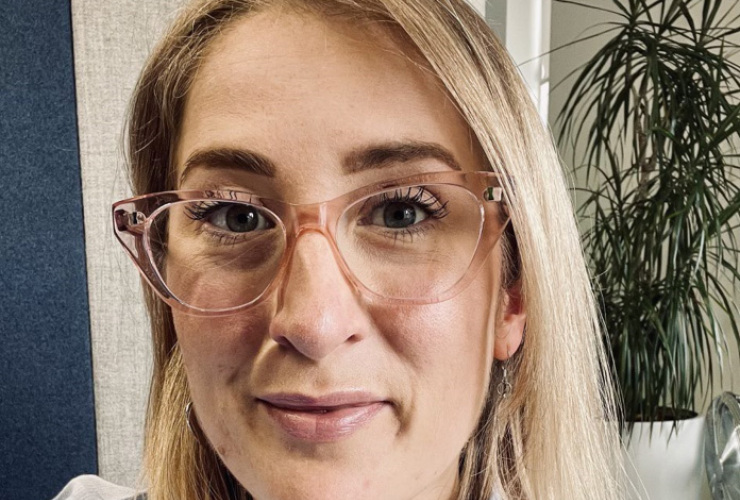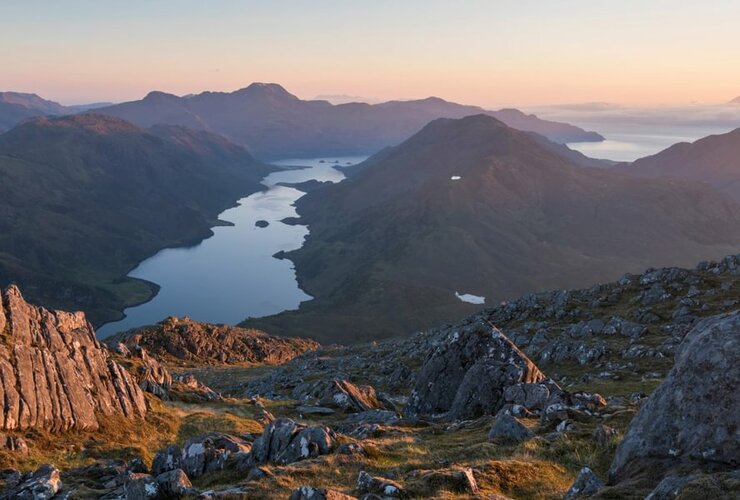Margaret Jarvis remembered
Enjoy a 1994 article about Knoydart's early inhabitants and ecosystem - written by Margaret Jarvis (31 October 1934 - 2 January 2022).

We were sad to hear of the death of a great friend of the Trust, Margaret Jarvis. Margaret and her husband Prof Paul Jarvis (25 May 1935 - 5 February 2013) joined the Trust in the early days and helped shape the organisation over the years. Paul served as a John Muir Trust Trustee from 1990 to 2003 and the couple were familiar faces at our AGMs.
Margaret and Paul moved to Aberfeldy near Schiehallion in 1997 where they helped form the Highland Perthshire Communities Land Trust - one of our partners in the Heart of Scotland Forest Partnership.
In the early days of the Trust, they spent a lot of time helping out at Li and Coire Dhorrcail in Knoydart - in the Trust's care since 1987 - where they volunteered on projects like the one that Margaret reported on in an article for our 1994 Newsletter, reprinted below.
An archaeological survey in Knoydart
Margaret Jarvis volunteered to help with the [1994] archaeological survey of the Trust's Knoydart property and learned there's more to turf covered boulders than meets the eye.
In 1755, at Muineil and Li, on John Muir Trust land on the north coast of Knoydart, there were six families of 35 people. The factor, Mungo Campbell, reported that the houses were made of "twigs manufactured by way of creels called wattling and covered with turf".
His successor, Henry Butter, of Pitlochry, encouraged the tenants to build stone houses and by the late 1760s they had replaced their wattle huts with good stone-walled farmhouses. By 1771 these farms had, respectively, 61 and 42 acres of land classified as "grass and good pasture".
At Muineil there were seven acres of "cornland" - it must have been incredibly hard to till the rocky ground with the "crooked foot" form of spade - five feet long, with a pointed end and a projecting peg used by the worker to push the point into the ground with his (her?) foot. Potatoes in lazy beds were followed by oats for two years and then grass. Manuring was with seaweed and dung from the cattle. At Li, the yield of oats was three times the weight of seed sown.
In some years, vast shoals of herring entered Loch Houm. In 1772, a traveller called Pennant reported that "there were multitudes of little occasional hovels and tents on the shore", for the crews of the boats. Interestingly, he also commented on the vast numbers of pines on the Knoydart side of the loch, and "multitudes of young ones springing up".
In 1795, the Glenelg minister wrote of 1,000 inhabitants in Knoydart - 850 papists and 150 protestants - and of 800 lost by emigration between 1770 and 1793. "The inhabitants dwell in villages bordering on the sea, along the sides of Lochurn and Lochneavis; here the soil is in general light, yielding crops of barley, oats and potatoes. The hills afford excellent pasture for all kinds of cattle".
This picture of a hive of activity, little more than 200 years ago, strongly contrasts with the area's present-day emptiness and tranquillity. With this in mind I volunteered to join in the detective work of the Royal Commission for the Ancient and Historical Monuments of Scotland. who were to carry out an archaeological survey for the Trust during the first week of June, 1991.
What evidence would we find of the former occupants? Would we be able to add to the documentary evidence about their way of life?
lan Smith invited two John Muir Trust volunteers - Wolf Gruellich and me - to a briefing at the RCAHMS offices in Edinburgh. Here we met the drawing office experts, Sam Scott and Alan Leith and saw their impressive preliminary work preparing large scale maps with overlays ready to receive the information we were to gather in the field.
On a gloriously sunny day in June, our heavily laden Land Rover arrived at Corran, where we were to be well-fed and generally pampered by Sheena Nash (quite a change from the tent and Trangia stove of previous visits). We longed for just one more such day; hours and hours of sunshine, fantastic views of the Cuillins, and, best of all perhaps, no midges. We were to have a whole week. Wonderful!
The first day, after donning the new life jackets and crossing Loch Hourn with Len Morrison, the boatman at Arnisdale, we traversed a large part of the John Muir Trust property, to get our eye in and assess priorities for the rest of the week.
Wolf and I learned to notice the "turf-covered boulder footings" and terraced areas of former huts and enclosures. Only walls a metre or so high would have intruded on our consciousness before: from then on hill-walking would have an additional interest and possibly be a lot slower.
On subsequent days, Sam and Alan were usually engaged in more detailed surveying, with the almost magical (to me) and very expensive electronic distance measuring equipment, complete with its own computer. Meanwhile, lan enthusiastically recorded dimensions and descriptions of 189 "archaeological sites" in his notebook and with his camera, while Wolf and I were variously; making measurements; walking the hillsides discovering yet more evidence of man's activities and buildings; mapping the extent and dimensions of the cultivation - ridges, which were always there on any piece of land which could conceivably be cultivated; or running errands for the experts.
We were excited by our finds. A grave near the shore close to Li tempted an urge to excavate, but conscience and time would not have allowed. We found more and more shieling huts, almost everywhere we thought might be suitable.
We enjoyed Rick Rhode's hospitality (lovely coffee!) and helpfulness at Li; we enjoyed our lunch breaks basking in the sun and contemplating the possible uses of the terraced platforms we were sitting on. Could they have been for charcoal-burning? Were they small enclosures for animals? Did the teenagers of two centuries ago enjoy a respite from parental pressures by sleeping in the huts built high up on the hillsides?
We enjoyed "Mrs Nash's nosh" every evening, and the wine we had, with great foresight, loaded in to the Land Rover in Spean Bridge.
We enjoyed our evening exploration of the north side of Loch Hourn, especially the magnificent view from the summit of Beinn Sgritheall at 10 o'clock, and still no midges. I shall certainly be a willing volunteer for the next RCAHMS survey.
- This article was first published in the John Muir Trust Newsletter, 12 January 1994.
- Find out more about volunteering oportunites at the Trust.


